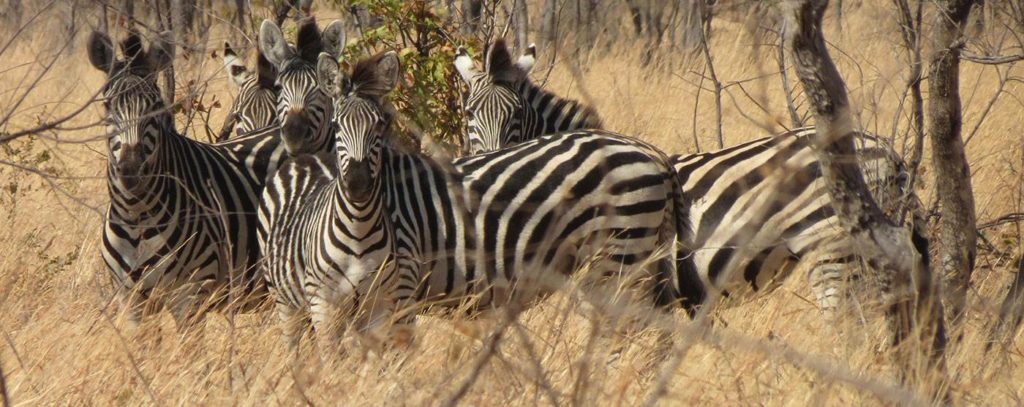African Plains Zebra & Mountain Zebra facts
Zebra are relatives of the horse family, a gregarious animal moving in herds of 20 or more.
The most numerous and widespread zebra species is the common or plains zebra (previously Burchell’s).
Zebras often move with wildebeest and occasionally hartebeest, roan, Giraffe and Rhino. This allows them to pool their defensive alertness and they usually have differing food preferences so grazing is not too competitive.

African plains Zebra Lifespan
Their gestation period is 12 months and in the wild they have a lifespan of about 20 years
Stripes
At first glance zebras in a herd might all look alike, but their stripe patterns are as distinctive as fingerprints are in man. Scientists can identify individual zebras by comparing patterns, stripe widths, color and scars.
The subspecies found north of the Zambezi river has evenly spaced dark stripes as compared to those found in the south of the Zambezi having broad stripes with brown ” shadow stripes” between the dark lines.
Zebras have shiny coats that dissipate over 70 percent of incoming heat, and some scientists believe the stripes help the animals withstand intense solar radiation.
The black and white stripes are a form of camouflage called disruptive coloration that breaks up the outline of the body. Although the pattern is visible during daytime, at dawn or in the evening when predators are most active, zebras look indistinct and may confuse predators by distorting true distance

It has always been assumed that the zebra’s stripes are for camouflage. One theory is that it serves to create an optical illusion of them being larger than they are or to confuse predators of their exact position when striking.
Their real purpose can only be speculation by humans and the zebra won’t tell us. Zebra north of the Zambezi river have ‘shadowless’ stripes (no brown)

Family Bonding
Family groups are stable members maintaining strong bonds over many years. Mutual grooming, where zebras stand together and nibble the hair on each other’s neck and back, helps develop and preserve these bonds.
Family members look out for one another if one becomes separated from the rest, the others search for it. The group adjusts its traveling pace to accommodate the old and the weak.
Zebras are important prey for lions and hyenas, and to a lesser extent for hunting dogs, leopards and cheetahs.
When a family group is attacked, the members form a semicircle, face the predator and watch it, ready to bite or strike should the attack continue. If one of the family is injured the rest will often encircle it to protect it from further attack
Mountain Zebra
Smaller than the African Plains Zebra, Mountain Zebras are made up of two sub-species: Cape Mountain Zebra and the Hartmann’s Mountain Zebra.
The Cape Mountain Zebra with larger females than males, while the Hartmann’s mountain zebra does not
All Mountain Zebra have a dewlap and are native to Namibia, South Africa and Angola.
